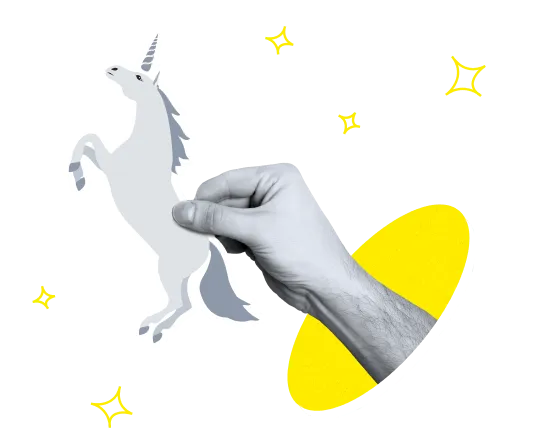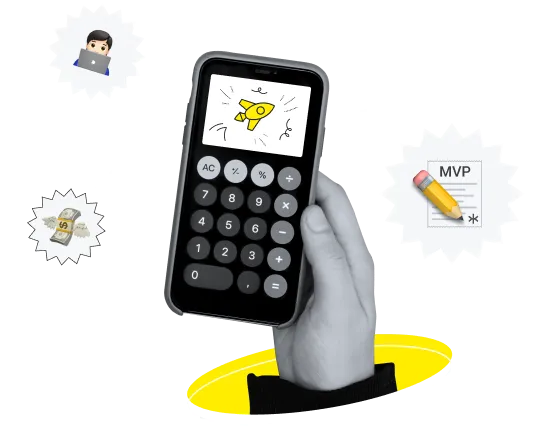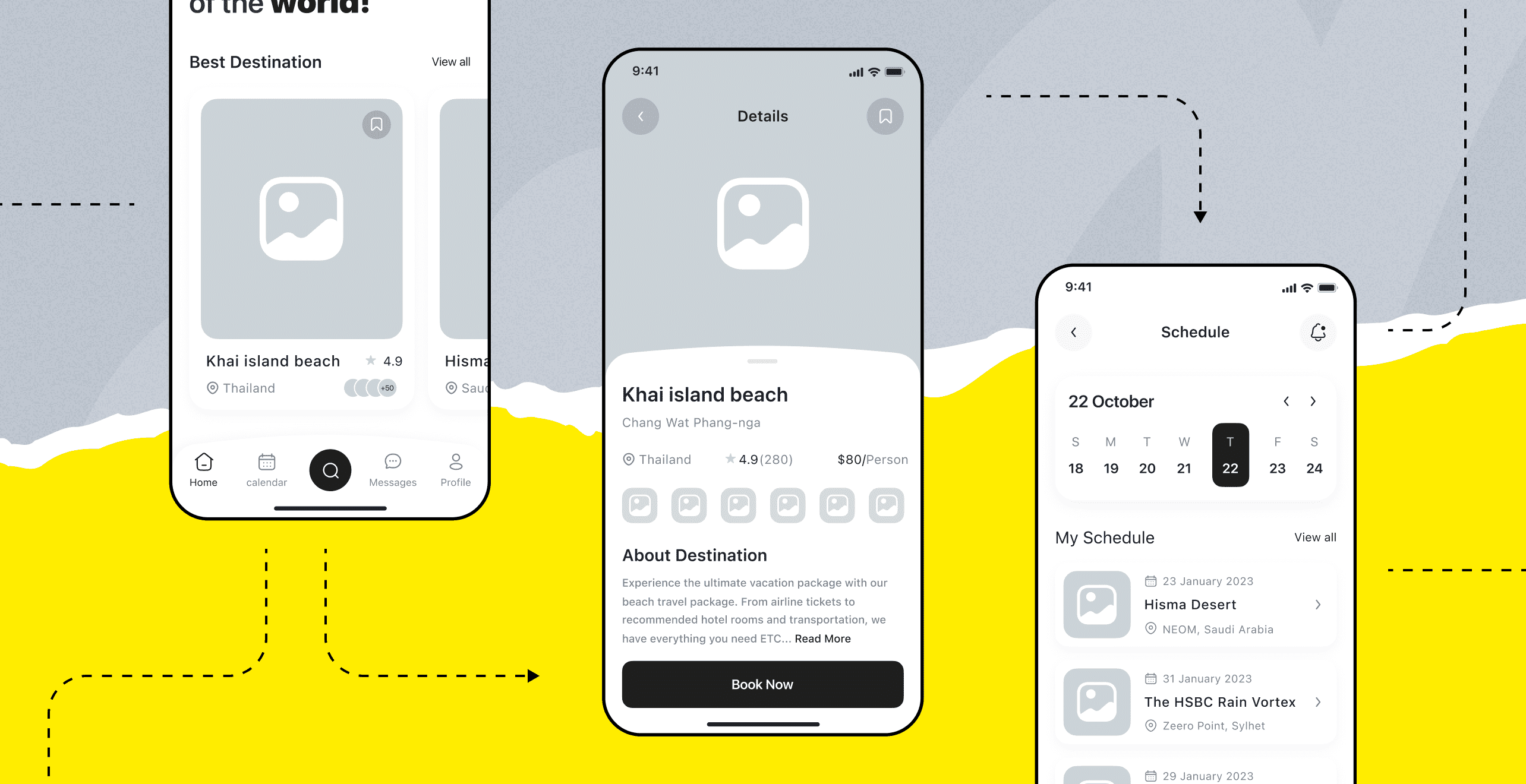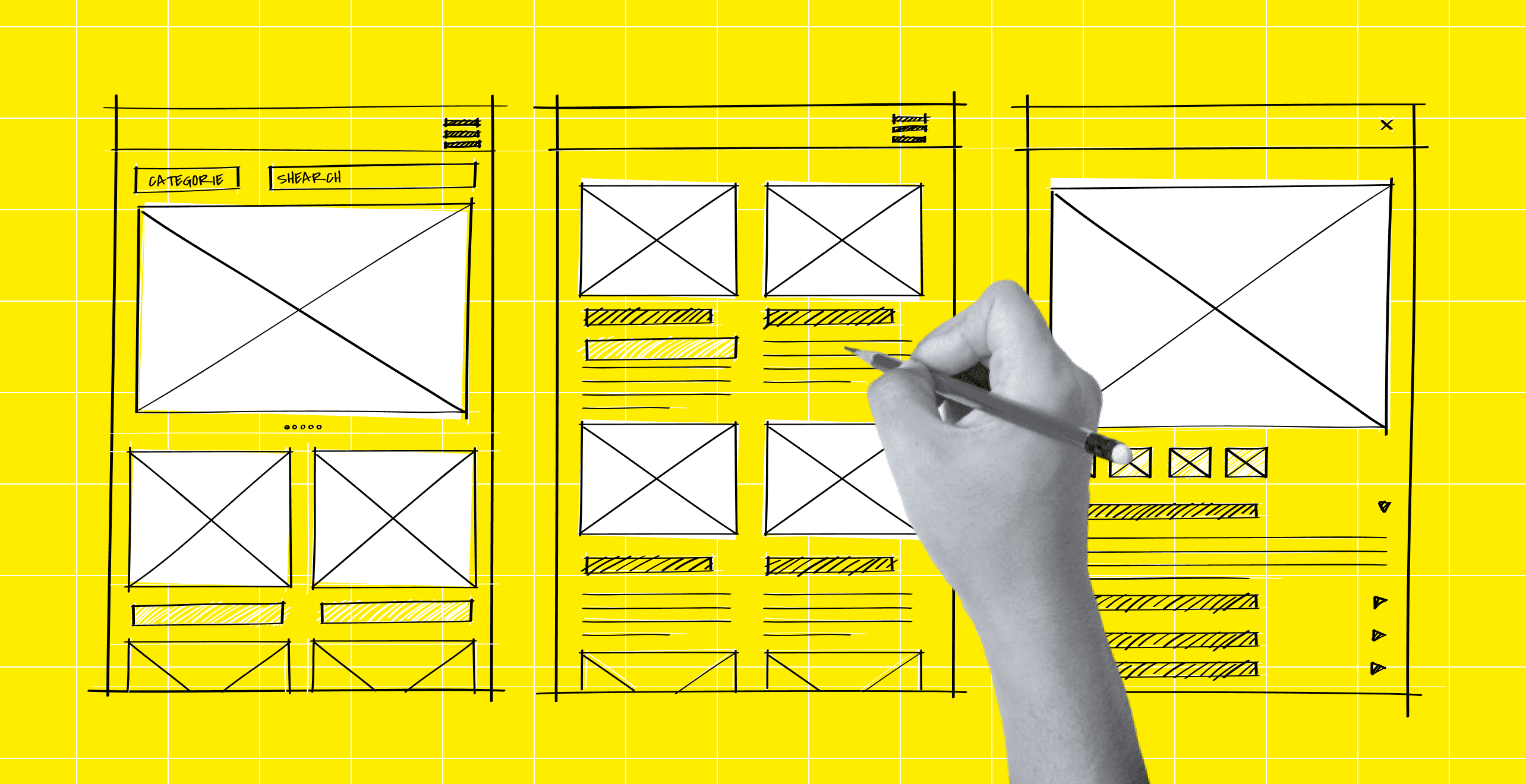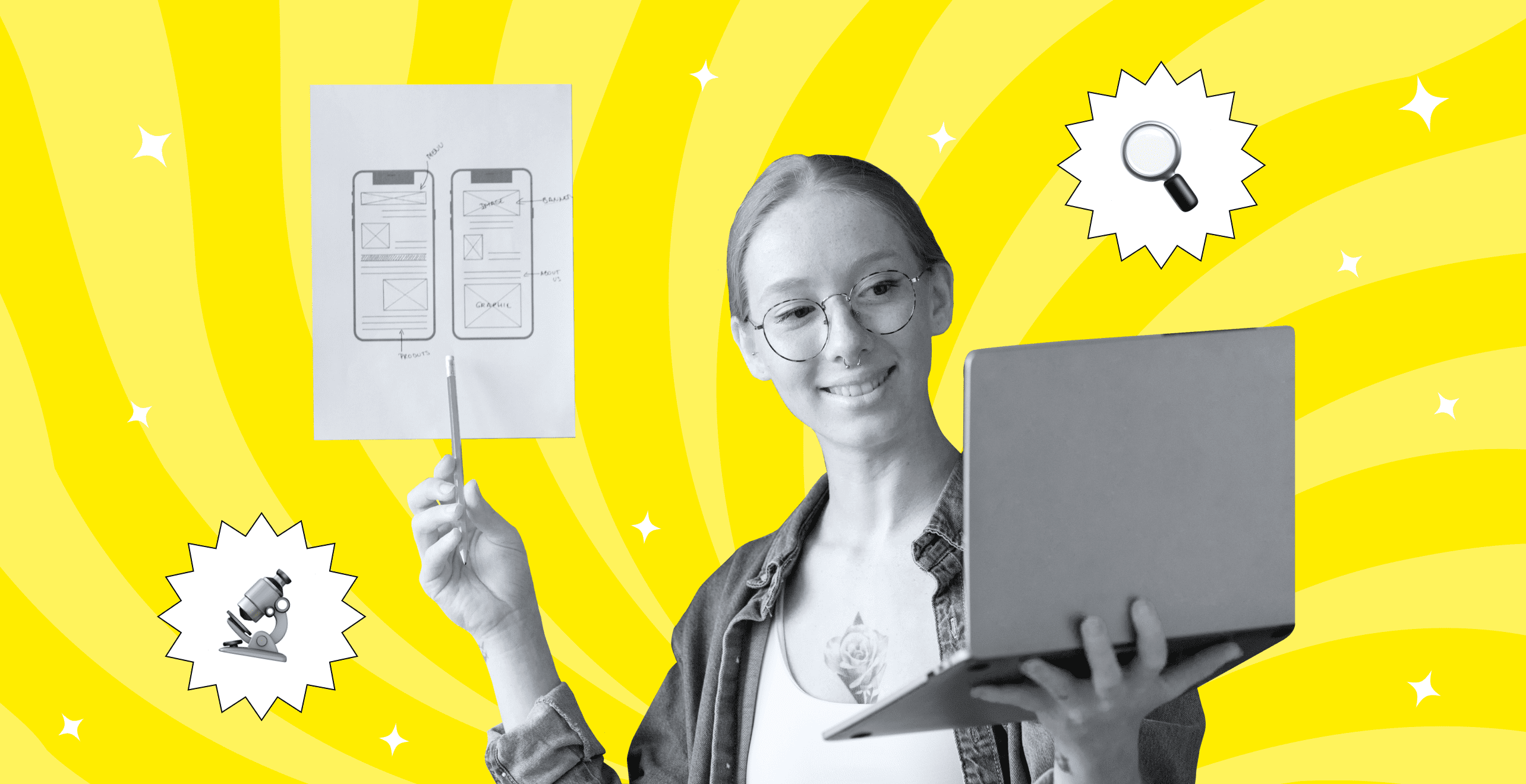Transforming In-Stadium Experience - Startup Stories with Chandler Young (iJustOrder)

Anton Oparienko (COO, Upsilon): Today we talk to Chandler Young, the CEO, and Founder of iJustOrder, a Dallas-based startup. Chandler, can you tell us more about your product, and what problem is it solving?
Chandler Young (CEO and founder of iJustOrder): So, iJustOrder is a mobile app that services sporting events of all sizes. We try to solve the problem with event-goers who want to make ordering concessions or merchandise at an event much more convenient. So we provide an app for customers to use to have those items delivered to their seats during the event. From the ranges of concerts, football games, basketball games, or anything of in that realm.
Anton: Great. And what was the idea behind the creation of this startup? So, what was the motivation to do it?
Chandler: I love to attend different sporting events year around. In June 2017, I was on Texas Rangers' baseball game and I just wanted to have a cold beverage delivered to me without leaving my seat. The inconvenience that I experienced of sitting in that heat and having to leave my seat for maybe 30 minutes I knew something had to change.
That's when I thought what if I made an app that could actually bring the idea to life. We always think of robots or technology, as forms of ways to make things possible in the future. So in that moment I was motivated to change the way the world attended sporting events forever. It started as kind of a joke, and I kept thinking of different ideas about how I would do it. And once I went home, I called my brother, and said: "Caylon, what if I made an app that could pretty much get any food or drink, I wanted at a game?" He listened and replied: "Chandler that's it!" And from there, I never let it go.

Anton: You talked to your brother about the idea, and you become confident as, "Okay, this might be a thing". But what kept you going? A single startup is easy to start and move from idea to have actually something that people can see or use. What were the main challenges, and what kept you going, and how did you solve them?
Chandler: What kept me going was pretty much my dream of creating the next coolest thing, something that I could be remembered for. It was like I could actually feel it happening already, and when I get certain feelings I go all out for them.
So, initially the main challenge I had was just how I would structure a business with an app, like, "How do I even start a business? What paperwork do I need?" The first challenge I came up with after applying for business licensing was trying to find a way to develop the first version of the app. Every time I Googled a question, it came up with a different price, and prices were getting crazier and crazier. Some resources showed me a six-figure number. Others said that I could fit into the $50,000 budget. It scared me a little, and I began thinking like "I don't have that amount of money, what am I supposed to do?"
So, I end up finding Appy Pie, a company that provides no-code application development software. Starting from $20 a month, you can create an app prototype. I made a prototype by myself to find out where to go further, whether my product could have any market potential, and how to find product-market fit.
Then, other questions came up, for example, "Who will be my customers? Who would be my first client?" And so, I thought to colleges. Small colleges were my first idea of how I could deal with that could help me get in position and make it come true.
And even before I went to colleges, there were some pretty large high schools here in Texas. Football is a huge thing here in Texas. So, I reached out to them first and asked them to share their thoughts about my product idea. They told me it was great. And I realized that if they said "yes" to the idea, I could try to sell it to them.
Anton: So, one of the most difficult things was actually to do a kind of MVP of a product. Did you look only for companies that could make applications in the United States, or did you look like all over the world?
Chandler: In the beginning, I was only looking at the United States, because I didn't even know much about tech. I knew about tech, but I didn't know about how the apps were built. And so, once I started asking people who got closer inside the industry, they told me: "You got to do more than just a US search. Your US prices are going to be much higher, it's not really what you want to deal with. It's a lot slower in the US. You need to look elsewhere." After that, I was referred to developers from the UK, and their price was much more reasonable.
Anton: Well, coming from the actual development company, the price is a major factor why people are coming to us also. Thank you. So, let me ask you about the current situation and how it affects you. Obviously, the COVID, all of the global gatherings, and a lot of venues and stadiums are closed. How is it affecting you, and what you're currently doing in terms of plan and effort? So, what is happening right now with the startup?
Chandler: Initially, when COVID first hit, our idea was: "Wow, this is a baseball season. This is our big time to get much work done, work with some new venues, and work with some new partners." So, we didn't think it would last this long. We didn't believe that it would be this strong of a hit. We didn't think it was going to be this devastating to the entire world. So, we thought we would be back up and running by early May. We thought we'd be running really by now.
So, as I said, we were still on the same plan. We felt like "It slows things up a little bit, but we'll be back." Since everything has been going on, we found out this might last until next year. As far as events have been back on pace, we've been coming up with different ideas of when things do open back up. Also, we thought about what we could do to prevent that from being causing us to not get orders for people not wanting to use the app.
Our app would pretty much help that because waiting in line is a thing where you're in the crowds, standing back to back with people. So, we think that could help stadiums in the effort of people not being so close to each other, the distancing. And we also have a little product that helps build out that protects meals when they're on the deliverable space from the counter to the customer seat. So, things like that we've been thinking of preventive measures to think of how we can just make people feel safe while ordering food. Now we're thinking about marketing strategies of when everything does jump back in, how can we make that work?
Anton: I know you're looking and planning for the future and actually trying to solve the social distancing situation exactly with your application. That's a great attitude. Good to know. So, can I ask you maybe something about your background? So, came up with an idea on the baseball game pretty much, but what was your background before you became an entrepreneur? What were you doing? What brought you to start your own startup?
Chandler: Before I came an entrepreneur I was working at Dr Pepper as a Commercial Trade Accountant in Plano, Texas. I was knew to Dallas-Fort Worth so I was working the normal 9-5 and exploring the city most of my time.
Growing up my entire life, my dad has always been in technology. He worked as the CTO of Saginaw Public Schools in Michigan. So, I was always around computers from the time I was born until I left for college at 18. So, I got to see every piece of Apple technology that come out, every Microsoft product, anything you can imagine, I knew how to build a computer from start to finish.
So, when you're doing something like that, you get to see how you can use technology in your everyday life with things we like to do. I played sports my entire life, so we always tried to come up with a system that could track our shooting even video recording our shooting and reviewing how to make myself better. Intertwining the two with sports and technology was something that I did my entire life.
And so, when in 2013, I came up with a comparable platform to Uber Eats. It was called GoGetterz. If you look it up on Instagram right now, the page is still up. But I didn't have an app for that platform. I hashtagged colleges near my hometown Saginaw, MI. People who searched by a hashtag could see my posts and place an order. I understood that I could add $5 and 50 cents as a delivery fee to every order to make a profit. That was like my first way of diving into entrepreneurship. I got my first taste of independence and business creativity I just loved it.
Anton: So, you've been around the delivery business for quite some time already?
Chandler: Yes, definitely.
Anton: You talk about technologies and how they prompted you to create services like iJustOrder. How do you think new and modern technologies would impact these services in the future? Maybe even like some AI, drones, whatever. What do you think about what will happen in the next five, ten years?
Chandler: I personally think that this is the best time for technology because the creators like myself and people who are deep into it think about the ways disruptive innovation can be used: from drones into robots, to self-driving cars. Instead of booking a trip with Uber Taxi, whose driver might have COVID, I can rent a self-driving car. If I need to order my food, now a drone can bring it to me.
So, in the next five years, we will see some of the most creative things to be launched. That's where I'm at in my future planning, you'll see expanded services from iJustOrder that involves drone delivery at a game in the future. During COVID-19, I've had much time to sit at home, come up with my biggest ideas, and get ready for that future, as you said in the next five to ten years. I think this is going to be the biggest time for AI or VR and other advanced technologies.

Anton: Great. Can I ask you more about the product and the B2B part of it? So, how hard it was to actually get into agreement with the stadiums and venues on exact details on, again, how it will be working, how you will find people on stadiums who will be delivering the merchandise or food. So, was it hard, or were they helping?
Chandler: Let me honestly describe how the work with stadiums is built. I call the stadium administration and talk to a secretary, or maybe a person from the athletic department. At first sight, they seem very enthusiastic. They invite me for a business meeting and usually feel so excited, so happy when I share my ideas with them. They say something like, "Yeah, let's do this, move forward". And to the second meeting, they come with a bunch of questions. They ask: "How does this work? How are we going to earn money?" I break down costs to be 100% transparent. I explain how the revenue model is going to work, where to get the runners who will help deliver orders during events, and more. After that, they usually give me the second "Yes".
By that third meeting, someone from C-levels joins negotiations with words like "We have some limitations. We need to slow things down. We are moving too fast." Because I could understand that it was such a new idea to them. For the administration, it sounds great. But they had been doing this stadium stuff for 20 plus years, and they were comfortable with it. It's been working, why do they need to change anything?
I would say that the negotiations held with the first 10 stadiums were under the same scheme: yes-yes-no. I did dozens of stage presentations: from Michigan State University to a WNBA team called the Dallas Wings. I've had multiple meetings, where I heard "Yes, yes. But I don't know right now; it's too much."
To some extent, it was fun, because I saw their reaction in the beginning and realized that they loved the idea. But once we got down to breaking down, they were just scared to push that "yes", because their name was behind that. So, by the time I got my first official "yes", we were down at Prairie View A&M University in Houston, Texas, that was the summer of 2018. And I was given the green light. At every meeting they said, "Yes, yes, let's do it. We won't lose anything. We can push more food". They only did select food items. They didn't give me an entire menu, but they gave me certain pieces of food that they were going to use to make it release.
That gave us the chance to practice with what we had, our technology, our AVP, their food, and see how the process is going. So, we got a chance to see problems early as they rise up. That stadium was located outside the city. So, it wasn't close to cell phone towers. So, when you're getting 20,000 to 30,000 people at that stadium, everybody's pinging off one tower. Now, that tower is sending out a slow signal.
So, now we're on the back end trying to receive orders, and our system isn't running fast, we can't see anything. So, we had to tap into the school's WiFi. And once we saw that it was a bunch of orders at our first game, we couldn't see all orders, because there were too many people. So, once we got on the network and saw the number of requests, we got crazy. We realized that we had to track and control lot of aspects. Do we have enough runners? Do we have enough food? Is the WiFi signal strong enough? And so on.
Anton: What do you think pushed your first stadium to say 'yes', the third time, on the third meeting? What was the key difference there?
Chandler: It seemed like they were more of a crew who definitely understood that technologies are changing the world around us. Regarding schools, they usually sign contracts with lunchtime catering systems. Students can order their lunch using such an app-based system instead of standing in line and waiting. I think that stadium understood that it's time to make the four jump with DoorDash and PostMates, and those kinds of things.

Anton: Maybe one of my last questions. What advice would you have for people who are just starting to build an MVP or even think about technology startup? Obviously, you should go through project discovery and find someone who's already experienced in it and talk to it, like from your experience. What advice would you give that really can help you to do it efficiently and to have success?
Chandler: Do your research. Know the market you're entering. Have an idea of what everything might cost if you were doing a tech startup. Know how much are customers willing to pay for similar services in the region you are going to launch. The price should be neither too high nor too low. You need to find the optimum. So, if you know you're going to be working on your project 20 hours a week, how much would you say your time is worth? Are you worth $30 per hour, or $40?
Always track your time. Track how many hours you put in every day. It will help you to know your own 'rate'. So, if you take new team members onboard, you can expect other people to work just as hard as you. By tracking your time, you will clearly understand if they meet your expectations.
Anton: So, knowing what you're selling and whom you can sell it to, and track your time and your efforts. That sounds pretty good. I guess that's pretty much all I wanted to ask. Chandler if you have anything to say in addition, feel free to.
Chandler: Please check out iJustOrder.com, where you'll see the latest product updates and everything we have going on in our marketing and our app and any other partnerships we have going. Soon, we will be releasing some statements about how we will provide a safe work of our platform at the sport events.
Anton: Thank you, Chandler, for this exciting conversation.
How Prototyping Can Make Your Startup More Attractive to Investors
From Chandler's story, we can see: it's a long way from an entrepreneur's "idea" to a working product with a real market and paying customers. A necessary intermediate step for proof-of-concept (POC), credibility with potential investors, and communication with your team, is a working prototype. Building a prototype should be an early and high priority task for every startup.
A prototype doesn't need to look great, but it must be able to translate your vision into something real and tangible. Here are some key objectives to keep in mind when designing your prototype to make it attractive to investors:
- Validate the customer need and opportunity. It's unreasonable to invest thousands of dollars in technology and then find that customers seem to be looking for something slightly different. Test your idea early in a form that is easy and inexpensive to modify.
- Demonstrate to you and your team that your idea is implementable. No matter how strong your vision and theory, you won't know for sure until you see it, that it really works. Even the best ideas often fail. Even when it works, key members of your team may not understand it all until they can touch and feel it.
- Leverage the technology to change directions as needed. In these days of rapid change, almost every startup has to adapt their solution, business model, or target customer. A pre-production prototype will allow you to be adaptive without undesirable consequences.
- Convince potential investors to take you seriously. Business angels and venture capitalists are all about reducing the risk. Per the above points, if you have a validated and working prototype, investment risks are dramatically reduced. These days, if you don't have a proven prototype, investors probably won't even talk to you or look at your created pitch deck.
- It's a good basis for working with vendors to finalize costs, manufacturing, and marketing. After the market and product have been validated, the real challenge comes. You will be searching for a software development company who can deliver it at less cost and time than competitors, and help build distribution and support channels. A prototype is the three-dimensional version of your vision.
Creating a prototype will not only save you time and money but also show the investors the proficiency of your idea. The prototype will help convince both investors and consumers and help build a brand reputation.
Also, it will allow you to improve the product with continuous feedback and testing and that too, at a minimal cost. Therefore, as a rule, always create a prototype before you fully develop your idea.
to top











